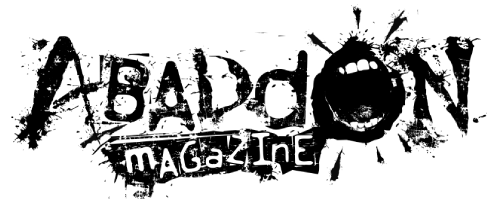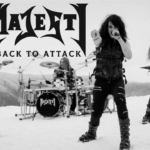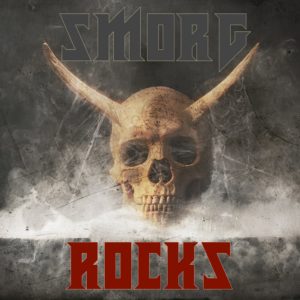Publisher: Rock Express Records
Date: November 29th, 2022
I’ve said it before and I’ll keep saying it probably until I die. Eastern Europe, late Cold War era, was a hotbed of awesome heavy metal! I know many of you don’t understand it or possibly don’t even care, but it’s the truth. We will gladly deify US legends, new wave of British heavy metal, Teutonic thrash and even those South Americans that further brutalized every genre they could. Still, as if the “iron curtain” was never lifted and we haven’t entered “the global village” age, the world still knows very little about what is going on in this region. Take her majesty, Russia. Can anyone name at least five bands that were brought up in communist Russia? That massive expanse covering most of Asia and a bit of Europe, too. They had to have a vibrant scene, right!? Even I, boasting my knowledge in this review, can perhaps get up to ten.
Some time ago I took it upon myself to present a number of radio shows that browsed through this region, as well as the time period in question. Though it posed an enormously difficult task, especially when one needs not only information but music as well. And needing it to sound at least decent for airplay. However, it did allow me an insight into the world in which these musicians and bands existed. The only disadvantage they had was that they were born in a wrong place and, particularly, in the wrong time, so that their work never really had a chance to reach the audience that yearned for every virtuoso guitarist and sexy vocalist.
Herein lays the only fault to the book I’m about to review. I would love to have it opened with an insight into the perspective of the decade in question. Social, cultural, political ambience that surrounded these works. I mean, we certainly don’t need it in Serbia, and this edition is mostly oriented towards Serbian audience even if the credits to each release are given in English for everyone to understand, but people from the “happy” western world would definitely find it interesting. Something like that would certainly round up this anthology, at least from my point of view.
As for the rest, yes, one can find flaws. Nitpicking, this could’ve been printed as a real anthology, on a thicker paper, hardbound and coloured (there is a special limited edition which ascertains those factors, too), but it remains a monolithic piece of historical evidence that we were here.
When I say “we”, I mean “they”, since I was born in the middle of the decade and have no recollection of the first steps of Kerber, Osmi Putnik or Atomsko Sklonište. Though I do enjoy their music and am in possession of some of their albums. Most of all, I mean the two gentlemen that made this book happen.
First of course, the author, Mr. Dejan Ilić. When you speak of the silent water that runs deep, that’s the guy you’re talking about. Us slightly younger metal footsoldiers from Serbia got to know him as a manager for the longest running Yugoslav speed metal band, Bombarder, but he was, and to a degree still is, the “go to” guy when you need a wider promotion outside our borders or a contact with a record label, touring agency, magazine… Still, while many bands from the area of former Yugoslavia owe him whatever wider recognition they achieved, he is deep down just a worshipper of this loud music and a collector of whatever he can find, related to rock, hard rock or heavy metal, coming from our nowadays independent countries.
Hence, who better to start us off on this journey? Yes, this is a journey and this book but a start of it. Especially when you take into consideration that it ends with a “to be continued”. Though I feel like it will be a dreadfully difficult task even in comparison with this book, seeing how the scene in all our countries has literally flourished at the end of next decade and in the new millennium in particular when the hyper-production hit us as much as it did the rest of the world.
Anyway, back to the book itself. Mr. Ilić is a connoisseur and a collector. On top of it, he is extremely meticulous and therefore precise, which shows throughout the book. Yet, he doesn’t lack a witty side and a sense of humour. Basically, what you get is an anthology of Yugoslav hard rock and heavy metal releases spanning the whole of 1980’s. Every release is presented with a cover artwork, line-up, date of publication, label, track listing, various credits and an “author’s touch”. By that I mean that Mr. Ilić gives us a short review at the end of each release’s page, his impressions, notes on which tracks not to miss and in some cases the fate of the band and its future. Short, concise and to the point, yet not at all laconic and often funny enough.
Then again, some might find this humorous side a bit out of place in a book that’s basically a historic document, but we’re not going to be grumpy and dusty historians when it comes to rock ‘n’ roll, are we?
On top of all that, the biggest, most important names are presented with additional information and those pages serve as separators, since the book is arranged chronologically and not alphabetically, band by band. This might also induce a bit of confusion, as you cannot follow the band all that easily, but I don’t find it a fault. Rather a decision of the author himself that, either way you put it, would make a debate.
Now that you’re familiar with the author and the content of the book, the second person of importance to mention is the original Serbian “Jack of all trades”, Mr. Branko Rogošić. Still personifying Rock Express Records, in this case as a publisher of this incredibly important tome, this guy used to be editor-in-chief for the Rock Express Magazine (and Metal Express Magazine), rock journalist, distributor, label and CD shop owner. Not to mention, as Mr. Ilić, an avid collector and worshipper of distorted guitars, savage drums and screaming vocals. If it had something to do with rock ‘n’ roll, Mr. Rogošić had his fingers in it, one way or another.
So, was there a chance that this anthology might slip under his radar? Was he ever going to miss a chance to participate? Hell no!
And then there’s the third character. Surprise, surprise! The one that is no back character. His work is actually the first you see when you grab the book. Of course, the graphic artist who adorned the cover. Don’t judge a book by its cover? Feel free to do so in this instance! Magnificent artwork by Slobicus Doomicus!
For the very end, I have a slight remark. What happened to the demos? Were there any, considering there’s not a single one mentioned in the book? I have no knowledge of their existence, so perhaps there weren’t any to mention. Who knows!? Maybe that’s the difference between east and west.
Like I said when I reviewed “Kraljevačka punk hronika”, this is the work that doesn’t just deserve but needs to have a fully English written version and as much foreign distribution as humanly possible. Something like Cult Never Dies offers. Perhaps a collaboration with this English publisher would be the way to go. This is, like I mentioned above, an incredibly important book, hopefully the first of the series of such anthologies. Spread them into decades, doesn’t matter, the importance remains at the same level.
This book shows that art, music in this case, doesn’t suffer any curtains, iron or otherwise. It is much alike the basic elements. Like air or water, it uses the slightest crack to burst through any tightening. Like earth, it is the ground we all stand upon, this or that side of the globe, doesn’t matter how much concrete you pour on top of it. Like fire, it burns through everything. Even stone, though remaining unburnt, is at least singed by it. Such is the power of hard & heavy music upon each heart made of rock!






